This is a report on the third and final night of the 2010 white burgundy vintage appraisal and oxidation check dinners in Los Angeles. Every February and March we taste the vintage which is then 7.5 years from the date of harvest, and we usually taste 60 to 75 of the top wines from the vintage over the course of three nights. This year we actually tasted 80 wines over three nights. Unfortunately, I’m very late in getting the notes posted about the dinners.
All of the wines were served single blind and all of the voting took place completely blind (with individual written ballots) with the attendees ranking their top five wines by bottle number.
This is the dinner I refer to as “Mostly Montrachet” because that’s what it consists of. This year we had 13 different Montrachets from the 2010 vintage along with the 2010 Coche-Dury Corton Charlemagne and two ringers – 2010 Ceritas Porter-Bass Chardonnay, which held its own among the very serious wines on this list and which performed far better than our other ringer, the 2010 Bruno Colin Chassagne Montrachet Blanchots-Dessus, which immediately borders Montrachet to the south.
The 2010 “Mostly Montrachet” dinner was held at Melisse in Santa Monica, California, which is a Michelin two-star rated restaurant. Josiah Citrin and Ken Takayama did an incredible job with the dinner as usual. The food was outstanding (as well as very visually attractive) and it was well matched to an exciting group of wines – overall, along with the 2007 Mostly Montrachet dinner, this was probably one of the two best Mostly Montrachet dinners from the perspective of wine quality. I had six bottles that I rated at 95 or higher among the 16 bottles tasted; and another five rated at 94 points.
CHAMPAGNE AND APPETIZERS


Smoked Salmon, Quail Egg and Brioche
Tuna Tartare, Avocado Mousseline, Citrus Tuile
Veal Tartare, Capers, Olive, Puntarelle
**1996 Philipponat Clos des Goisses Champagn**e
Citrus and toast aromas; very bright lemon-lime citrus flavors with good depth and a light toasty component like Krug; very long citrus and minerals finish. Very impressive. 95
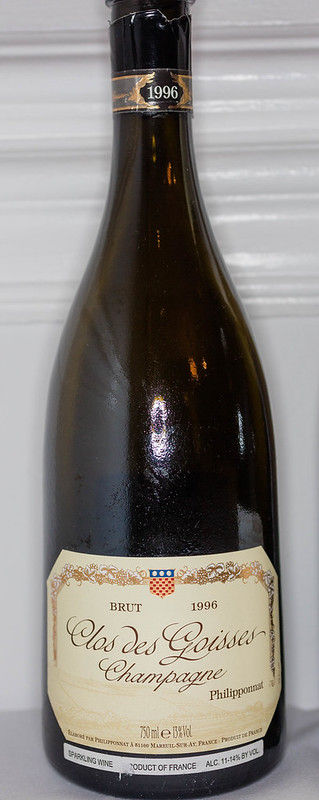

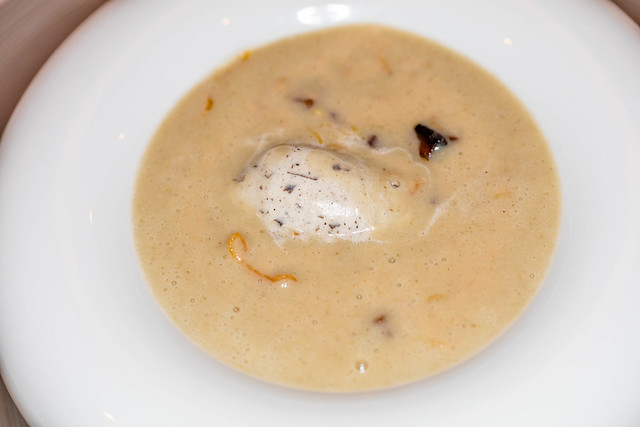
1996 Clos des Goisses and an Intermezzo course shown before and after the “soup” portion was added. It was fabulous.

The Bread Tray – even the rolls are amazing at Melisse. My favorite is the basil roll, which tastes as good as it looks.
FLIGHT ONE:
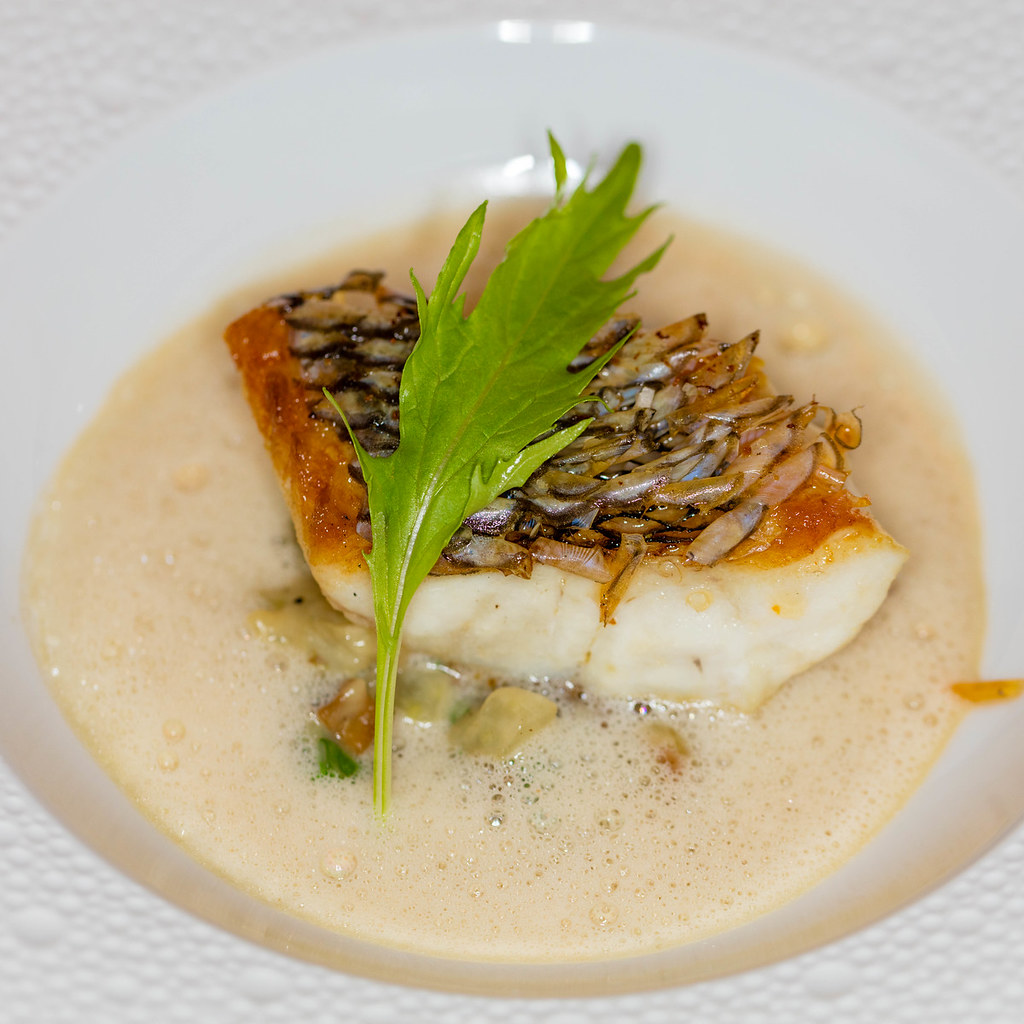
Black Bass “En Ecailles” with Fennel, White Mushrooms and Green Garlic
1 [2010 Domaine Thenard Montrachet]
Medium gold color; some advanced aromas and hints of hay; quite rich almost honeyed fruit on the palate. The group consensus was that this is advanced. Group Rank: Tied for 14th (last), 0 points (0/0/0/0//0) 92 - Advanced
2 [2010 Sauzet Montrachet]
Medium gold color; strong reduction aromas – fusel oil; very bright, racy flavors on the front end of the palate; after some air this showed medium weight on the palate and some caramel and a very nice finish, but the very strong reduction aromas never went away. Everyone agreed about the strong reductive aromas. Group Rank: 8th, 7 points (0/1/1/0/0) 94?
3 [2010 Prieur Montrachet]
Lighter gold color; aromas of pear with tropical fruit (pineapple) overtones; some bright and slightly sweet citrus flavors, but much less volume and density than the others. Nice wine, but this is too light/dilute to be great. Maybe overcropped? Or one of the ringers? Some felt this was from California. Group Rank: 13th, 1 point (0/0/0/0/1) 93
4 [2010 Bruno Colin Chassagne Montrachet Blanchots Dessus (Ringer #1)]
Fairly full gold color; aromas of apricot – notably advanced plus a funky, beer yeast type of flavor. Group consensus was advanced and very off. [N.B. Ringer selected because of its common border with Montrachet] Group Rank: Tied for 14th (last), 0 points (0/0/0/0/0) DQ – Advanced and off
5 [2010 Drouhin Montrachet de Laguiche]
Medium plus gold color; aromas of ripe peach; ripe peach flavors carry over to the palate; good acidity and nice density; this is mature and has good weight for Montrachet. A nice wine. Six of ten votes for best wine of the first flight. Group Rank: Tied for 9th, 6 points (0/1/0/0/2) 94
FLIGHT TWO:
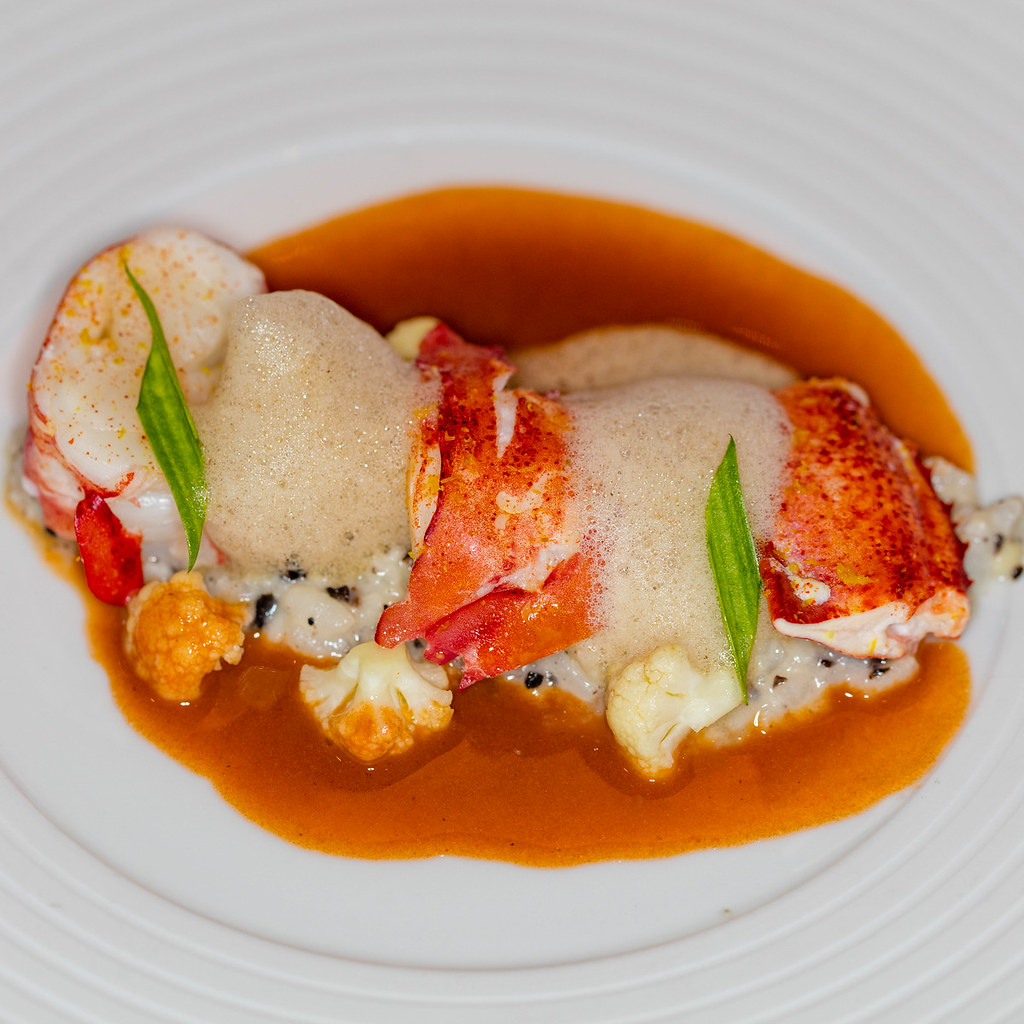
Maine Lobster with Aged Acquerello Rice, Cauliflower and Parmesan
6 [2010 Jadot Montrachet]
Light gold color; green apple aromas with some initial reductive notes, but small compared to #2; on the palate this has green apple and pear with a very cool and clean impression; an absolutely beautiful, long sweet fruit and minerals finish. My second favorite wine of the night. Group Rank: 3rd, 23 points (1/4/0/1/0) 96
7 [2010 Ceritas Porter-Bass Chardonnay (Ringer #2)]
Light gold color with greenish tinges; aromas of tropical fruit and a hint of a green vegetable; very nice on the palate – very good acidity and yet some richness; the acidity is almost the “prickly pear” variety – as though a little unsettled; bright citrus and minerals finish. I like this, despite the slightly odd aroma component. [N.B. I’ve had better bottles of this on other occasions] Group Rank: 12th, 2 points (0/0/0/1/0) 94
8 [2010 Roche de Bellene Montrachet]
Light gold color; very light lime and lemon citrus aromas with some reductive notes; super clean, bright lime and lemon citrus flavors with some nice minerality in the background; lighter than some of the others; a fairly long sweet finish. Three of the group thought this was a little flabby for Montrachet. I thought this had some potential upside. Group Rank: Tied for 14th, 0 points (0/0/0/0/0) 94+
9 [2010 Bouchard Montrachet [DIAM]]
Lightest gold color of the flight; green apple aromas; bright citrusy flavors which, with more air, became a bit phenolic on the back half of the palate – after further air, this disappeared; a very nice lattice work of minerality on the finish. This needs time. Group Rank: 5th, 9 points (1/0/0/2/0) 94+|95
10 [2010 Latour Montrachet]
Between light and medium gold color; very bright citrus and melon aromas; sweet citrus flavors with some minerals on the mid-palate; this one exhibits more power and alcohol on the mid-palate than the others in this flight, but it also has a shorter, somewhat clipped finish. Group Rank: 11th, 3 points (0/0/1/0/0) 93
11 [2010 Bichot Montrachet]
Light gold color; aromas of green apple and pear; pear and slightly exotic fruit element with lots of depth; good weight for Montrachet. I like this but the exotic fruit element throws me off a little. Group Rank: Tied for 9th, 6 points (0/0/0/3/0) 94
FLIGHT THREE:
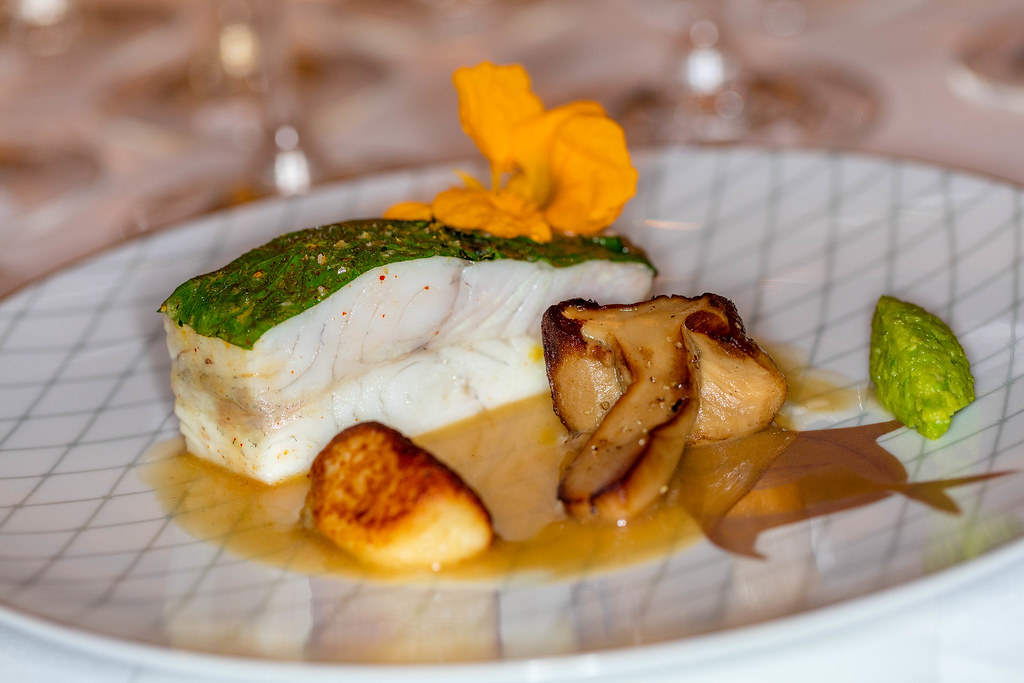
Nasturtium Crusted Turbot with Fava Beans, Porcini Mushrooms and Brown Butter
12 [2010 Ramonet Montrachet]
Very light gold color; spearmint with incredibly sweet key lime citrus and white flowers aromas; this has Ramonet written all over it; very bright, tight, yet fabulously dense wine; unbelievably long minerals and citrus finish. This is easily my number 1 wine of the night and yet it has miles to go. Group Rank: 4th, 16 points (2/0/1/1/1) 97+
13 [2010 Maison Olivier Leflaive Montrachet]
Light yellow gold color; sweet white flowers aromas with a little background reduction and smoke (fades); with air this became a medium bodied but super elegant wine and very classy with a long finish. Group Rank: Tied for 6th, 8 points (0/0/0/2/0) 94
14 [2010 Coche-Dury Corton Charlemagne]
Very light gold color; slightly tropical (pineapple and coconut) and dried flowers aromas; very pretty flavors on the palate – sweet brioche or pastry flavors and some slightly tropical fruit; this is a bigger wine than the others in this flight and the finish is slightly phenolic. Impressive, but not really together yet. My number 4 wine of the night. Group Rank: 2nd, 26 points (2/2/1/2/1) 95
15 [2010 Colin-Morey Montrachet]
Very light gold color; ripe pear and citrus aromas; this wine has great richness on the palate with nice acidity and is quite amazing in its depth, Coche perhaps? But it is not as dense as Coche Corton usually is; beautifully complex fruit and minerals finish. My number 3 wine of the night. Group Rank: Tied for 6th, 8 points (0/0/2/0/2) 95
16 [2010 Remoissenet Montrachet]
Very light gold color; aromas were initially reductive; evolved to lemon-lime citrus aromas and flavors with really amazing depth; a very nice citrus and minerals finish that exhibited a slightly reductive, very slightly bitter phenolic element in the finish that just needs time to resolve; this will be a fabulous Montrachet with a little more time. My number five wine of the night. Group Rank: 1st, 35 points (4/2/2/0/1) 95+
DESSERT COURSE

Fior di Philly Gelato [courtesy of Andy Gavin]
One of Andy Gavin’s hobbies is making gourmet gelato at home. You have to be incredibly good at if for Melisse to let you bring your own gelato, and Andy is.

Cara Cara Orange Souffle and Heilala Vanilla Ice Cream
Not to be outdone, the pastry chef produced an amazing orange soufflé to go with the 1967 Rieussec.
1967 Rieussec
Brilliant orange color; blood orange aromas with hints of maple syrup; really complex and hard to describe but I loved this one. 95
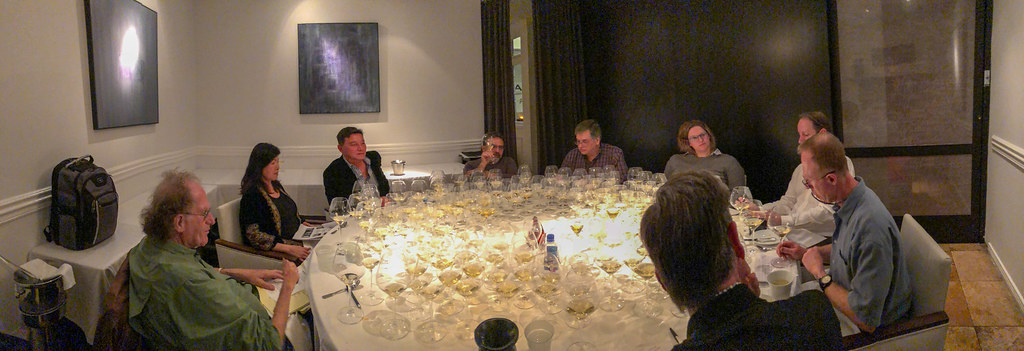
Mostly Montrachet - Group Photo
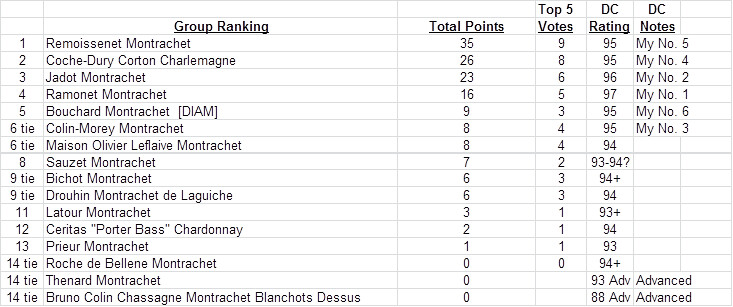
Mostly Montrachet Results
Some comments on the 2010 vintage overall:
The 2010 vintage illustrates, perhaps better than most, the difficulty in making sweeping judgments about a vintage. The flight of 2010 Chablis and the flight of Criots/Bienvenues Batard Montrachets probably ranked as the best we’ve ever had from those appellations. The wines from Montrachet were at a similar very high overall level of quality – along with the 2007 vintage, one of the top two “Mostly Montrachet” dinners. The wines from Chevalier Montrachet (we had 15 different Chevaliers plus the Colin-Morey Chassagne En Remilly that was the overall No. 1 rated wine on night two) were a little bit more variable, but mostly performed at a similarly high level. But the wines from Meursault, Corton Charlemagne, and Batard Montrachet – viewed as a group (and certainly there were some exceptions, like the Coche-Dury Corton Charlemagne) were not nearly as impressive.
One of the problems that affects a number of 2010s is botrytis. There was virtually nothing written about it when the reviews came out, but most of the producers I’ve spoken with over the past few years acknowledge it was an issue – and for some, it was a significant issue.
The pleasant surprises of the 2010 vintage
There were some very notable pleasant surprises from the 2010 vintage for me.
2010 Colin-Morey Chassagne Montrachet En Remilly – an absolutely stunning wine. This ringer, which immediately borders Chevalier at the top of the vineyard on the south side, was the overall winner on night two by a big margin. This just blew away 15 Chevalier Montrachets and 15 more grand crus from Batard, Bienvenues and Criots. Colin-Morey made Chassagne En Remilly only in 2009, 2010 and 2011. Pierre-Yves also makes a St. Aubin En Remilly, which is the next adjoining vineyard to the Southwest. [PIERRE YVES: PLEASE make some more Chassagne En Remilly!!]
2010 Francois Carillon Chevalier Montrachet – Francois Carillon, most noted for his viticultural efforts at Domaine Louis Carillon, made a very formidable Chevalier Montrachet in his debut vintage.
2010 Remoissenet Montrachet – The group’s top-rated Montrachet, for the second year in a row. Remoissenet has very obviously made huge strides forward since it was acquired approximately a decade ago by Ed Milstein. Pierre Rovani, who previously worked for Wine Advocate, has been the régisseur since Ed Milstein took over ownership.

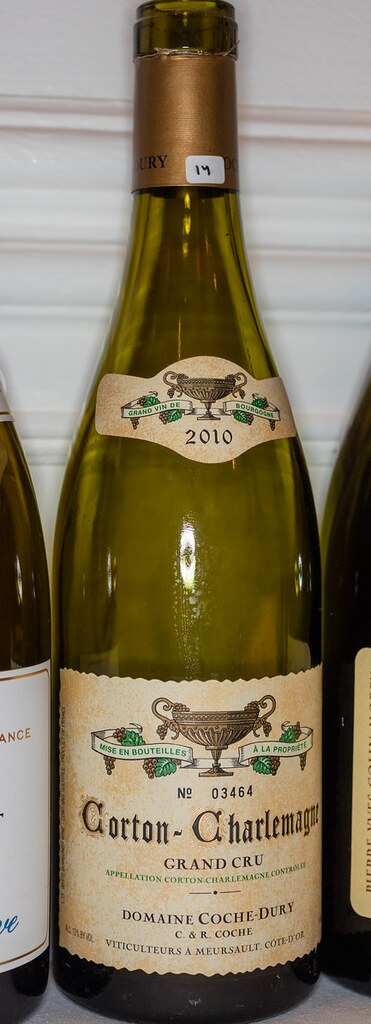

Remoissenet was the top-rated Montrachet for the second year in a row. Coche Corton finished as the group’s second favorite. The Jadot was the No. 3 wine of the night.
2010 Colin-Morey Bienvenues Batard – the most stunning wine in the best flight of BBM I’ve ever tasted.
2010 Jadot Montrachet – a spectactular Jadot Montrachet that brought back memories of the pre-2000 Jadot Montrachets. With DIAM closures beginning with the 2011 vintage, I suspect that Jadot will soon once again become a desired white burgundy brand.
2010 Fevre Clos and Preuses – it was pretty astonishing to see these two wines finish as two of my top three Chablis from 2010 at 7.5 years of age. Here again, the most notable difference is DIAM.
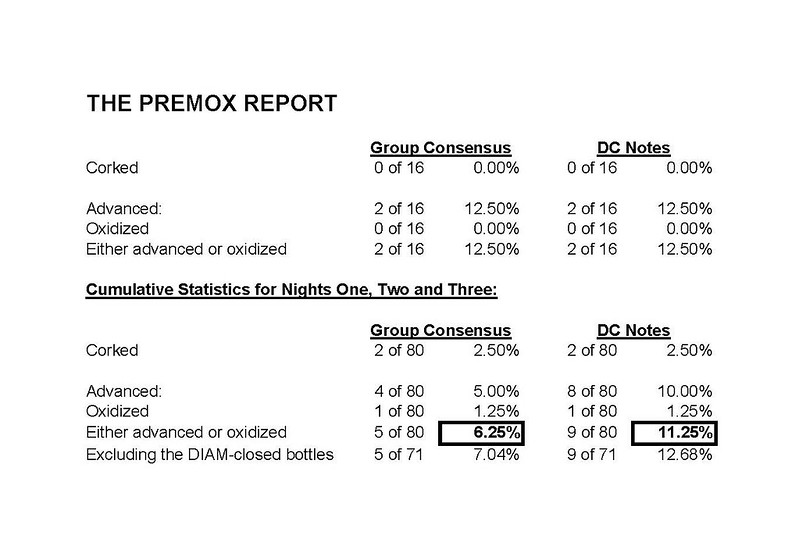
With 80 different bottles tasted over three nights, the 2010 vintage had the lowest combined incidence of prematurely oxidized or advanced wines that we’ve ever experienced (11.25%). (2004 and 2009 rank second and third.)
Over three nights, we had nine bottles which were closed with DIAM closures. Once again, none of these bottles was corked, oxidized or advanced. Over two years we’ve had 18 bottles closed with DIAM and not a single one has had a defect. Looking at the results for the 2009s, if you considered only the cork-closed bottles, the incidence of wines that were advanced or oxidized was 15.1%. For 2010, excluding the DIAM bottles, the result would be 12.68% – essentially tied with the 2004 vintage for the overall lowest incidence of wines either advanced or oxidized. It may be too early to draw final conclusions, but this is an incredibly impressive track record for the DIAM closed bottles over a two year period, especially since some of the producers using DIAM, including Fevre and Montille, had some of the worst premox performance previously. So far, the DIAM closures appear to perform exactly as had been represented. (Next year we will include several Jadot wines to test the DIAM performance as Jadot adopted DIAM closures beginning with the 2011
vintage.)
Photo Credits – Andy Gavin